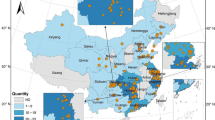Abstract
Soil remediation is of increasing importance globally, especially in develo** countries. Among available remediation options, stabilization, which aims to immobilize contaminants within soil, has considerable advantages, including that it is cost-effective, versatile, sustainable, rapid, and often results in less secondary pollution. However, there are emerging challenges regarding the long-term performance of the technology, which may be affected by a range of environmental factors. These challenges stem from a research gap regarding the development of accurate, quantitative laboratory simulations of long-term conditions, whereby laboratory accelerated aging methods could be normalized to real field conditions. Therefore, field trials coupled with long-term monitoring are critical to further verify conditions under which stabilization is effective. Sustainability is also an important factor affecting the long-term stability of site remediation. It is hence important to consider these challenges to develop an optimized application of stabilization technology in soil remediation.
Similar content being viewed by others
References
Zhang F, Li G. China released the Action Plan on Prevention and Control of Soil Pollution. Frontiers of Environmental Science & Engineering, 2016, 10(4): 19
Zeng G, Wan J, Huang D, Hu L, Huang C, Cheng M, Xue W, Gong X, Wang R, Jiang D. Precipitation, adsorption and rhizosphere effect: The mechanisms for Phosphate-induced Pb immobilization in soils-A review. Journal of Hazardous Materials, 2017, 339: 354–367
Dermont G, Bergeron M, Mercier G, Richer-Laflèche M. Soil washing for metal removal: A review of physical/chemical technologies and field applications. Journal of Hazardous Materials, 2008, 152(1): 1–31
Cui L, Pan G, Li L, Bian R, Liu X, Yan J, Quan G, Ding C, Chen T, Liu Y, Liu Y, Yin C, Wei C, Yang Y, Hussain Q. Continuous immobilization of cadmium and lead in biochar amended contaminated paddy soil: A five-year field experiment. Ecological Engineering, 2016, 93: 1–8
Wang F, Wang H, Al-Tabbaa A. Leachability and heavy metal speciation of 17-year old stabilised/solidified contaminated site soils. Journal of Hazardous Materials, 2014, 278: 144–151
Suzuki T, Nakamura A, Niinae M, Nakata H, Fujii H, Tasaka Y. Lead immobilization in artificially contaminated kaolinite using magnesium oxide-based materials: Immobilization mechanisms and long-term evaluation. Chemical Engineering Journal, 2013, 232: 380–387
Hou D, Al-Tabbaa A. Sustainability: A new imperative in contaminated land remediation. Environmental Science & Policy, 2014, 39: 25–34
Hou D, Gu Q, Ma F, O’Connell S. Life cycle assessment comparison of thermal desorption and stabilization/solidification of mercury contaminated soil on agricultural land. Journal of Cleaner Production, 2016, 139: 949–956
Shen Z, Som A M, Wang F, ** F, McMillan O, Al-Tabbaa A. Longterm impact of biochar on the immobilisation of nickel (II) and zinc (II) and the revegetation of a contaminated site. Science of the Total Environment, 2016, 542(Pt A): 771–776
Alam M S, Swaren L, von Gunten K, Cossio M, Bishop B, Robbins L J, Hou D, Flynn S L, Ok Y S, Konhauser K O, Alessi D S. Application of surface complexation modeling to trace metals uptake by biochar-amended agricultural soils. Applied Geochemistry, 2017
Acknowledgements
The first author would like to thank the Killam Trusts of Canada for kindly providing the Izaak Walton Killam Memorial Postdoctoral Fellowship. The corresponding author would like to thank the Natural Science Foundation of Jiangsu Province of China (No. BK20150683).
Author information
Authors and Affiliations
Corresponding author
Rights and permissions
About this article
Cite this article
Shen, Z., Li, Z. & Alessi, D.S. Stabilization-based soil remediation should consider long-term challenges. Front. Environ. Sci. Eng. 12, 16 (2018). https://doi.org/10.1007/s11783-018-1028-9
Received:
Revised:
Accepted:
Published:
DOI: https://doi.org/10.1007/s11783-018-1028-9




